Review: Boom Beats
Score:
80%
There are two types of music rhythm game out there – the first uses existing songs and performances and carefully pre-sculpts the musical beats you need to hit (Rock Band is a good example of this), and the second is where your own musical collection is used and the program will analyse the music to create the patterns to match on the fly. Where does Gamelion's Boom Beats fit in?
Buy Link | Download / Information Link
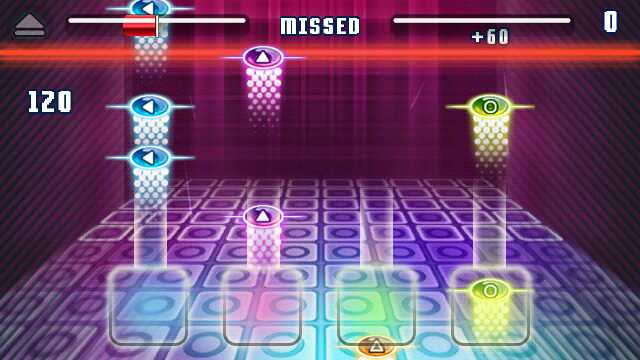 Boom Beats, from Gamelion, takes the first approach but rather than go for a popular music approach (such as the aforementioned Rock Band’s version of Boston’s “More than a Feeling”), it goes for its own custom composed club and dance music tracks. That makes for a rhythm game that is pretty much beat perfect, and with skill levels that reflect a difficulty that the developers want to achieve, rather than force a complicated pattern on top of Status Quo’s “Whatever You Want”.
Boom Beats, from Gamelion, takes the first approach but rather than go for a popular music approach (such as the aforementioned Rock Band’s version of Boston’s “More than a Feeling”), it goes for its own custom composed club and dance music tracks. That makes for a rhythm game that is pretty much beat perfect, and with skill levels that reflect a difficulty that the developers want to achieve, rather than force a complicated pattern on top of Status Quo’s “Whatever You Want”.
It also makes it a little less accessible because you’re not familiar with the music, and this is where you start to lose players, because you really need to like dance and electronic music. But if you can get in the groove, you’re going to find a great game under here.
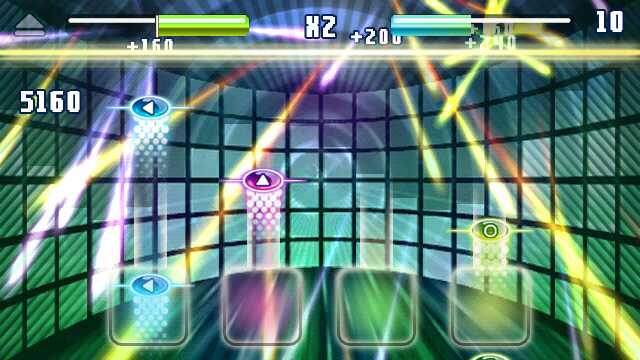
And it’s a game that you will really need to work at, because accuracy is very important. Following the standard template of games like this, you have a target line and notes that move towards it. As they reach the line, you hit the corresponding button. Get it spot on and lots of points are yours. Get it slightly wrong, and you’ll still score some points. But if you’re off the beat, not only will you not score any points, but you’ll lose energy. Too much energy dissipated and it’s game over.
Getting back energy is a matter of hitting the notes and claiming it back – the top left bar on Boom Beats screen will fill up with green on the right side as you are successful in matching the rhythm, while if it turns red and starts to fill up from the left hand side, be warned, you are in danger. The other bar, on the right side of the screen, is the “perfect” bar, for want of a better description. This fills up on every successful beat you hit, but on a single mistake and missed beat, it will empty, and you need to build up a chain of beats again. Naturally, you want to get this filled up for the bonus points it offers.
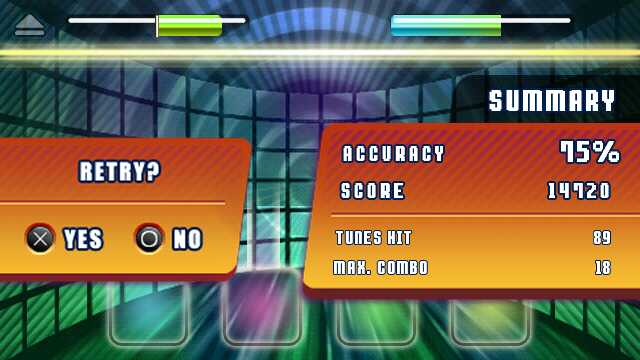
Boom Beats is packaged with fourteen tracks, although you will need to unlock the majority of them by playing the first few songs proficiently. And that’s not an easy thing to do, because Boom Beats needs incredibly accurate play on the touchscreen – there is a very narrow window when you can press the on-screen button and it will be taken as a correct 'keypress'.
The key is not to watch for the beat crossing the line, but to, surprisingly, listen to the music. You need to master getting the flow of information with your eyes and mentally stacking these up so your thumbs can hit the buttons on the beat. It’s much like reading music and playing in an orchestra.
Part of the challenge here is how to actually hold your smartphone and play the game – with the E7 I tried to play it on the table with my fingers, but in the end that was just not working (and it kept sliding away). Hiding the phone in your hands and having your left thumb do two buttons and the right thumb the other two seemed to work well, and a lot of the beat patterns matched up to this approach.
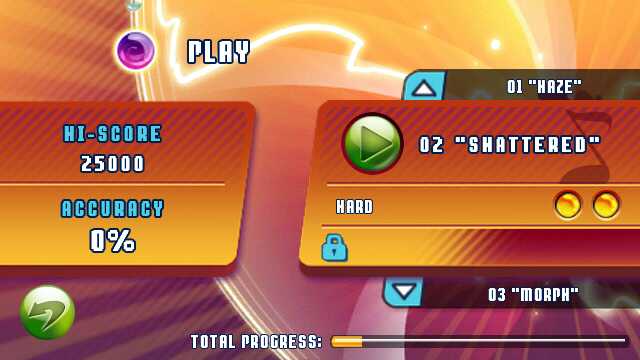
That’s not surprising, as Boom Beats has been ported over from the Sony Playstation Portable, where the dual controller layout on either side of the sceen makes a lot of sense for the two thumb approach. And while I’ve nothing against conversions from the PSP (for the record, Monster Hunter Portable on Symbian would be perfect), would it have taken Gamelion any longer to remove all the on-screen icon references to the traditional square, cross, triangle and circle buttons used on the PSP? Yes, the touchscreen drives everything here, so it's not vital, but it’s still a tiny puzzle as to some of the strange symbol placement – and it distracted me for a few moments.
The other surprising thing about Boom Beats is that it doesn’t have an "easy" skill level. You have a choice of “normal” or “hard”. "Normal" is going to require a lot of practice to get any high scores at. Although it is quite forgiving and you can make mistakes, you won’t get any sort of decent score unless you can hit the beats at the exact moment they pass the line.
And then there is "hard", which quite frankly is going to scare the new player to the game if they go straight to this. It’s just… relentless, like the opening to "Layla" played on an electric guitar at full speed.
Should there be an “easy” level where there is a lot of margin for error and you can rack up points easily, along with multipliers and lots of spare energy? I can see that debate going both ways with game developers. I’d tend to say yes, but it’s not a huge loss to make a game be something that needs to challenge the player. No training wheels is a valid option in my mind.
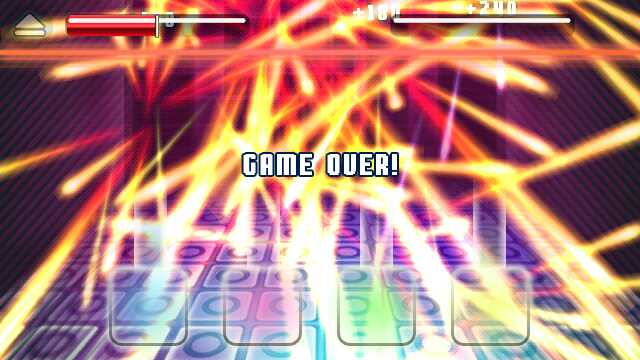
And one final note, the graphics on display here, in the background as art and during the game, are pitch perfect. They visually reward you when you make a good or perfect beat, and really add to the game’s electronic feel, giving it a vibrancy and tangible sense of being something that is constantly changing.
Boom Beats won’t appeal to everyone, and there will be some out there that only want rhythm games where they can play along with Franz Ferdinand, but if you’re happy to go outside your comfort zone, you’re going to find a challenging music game that should have a lot of longevity on your phone.
-- Ewan Spence, April 2011.
Reviewed by Ewan Spence at
